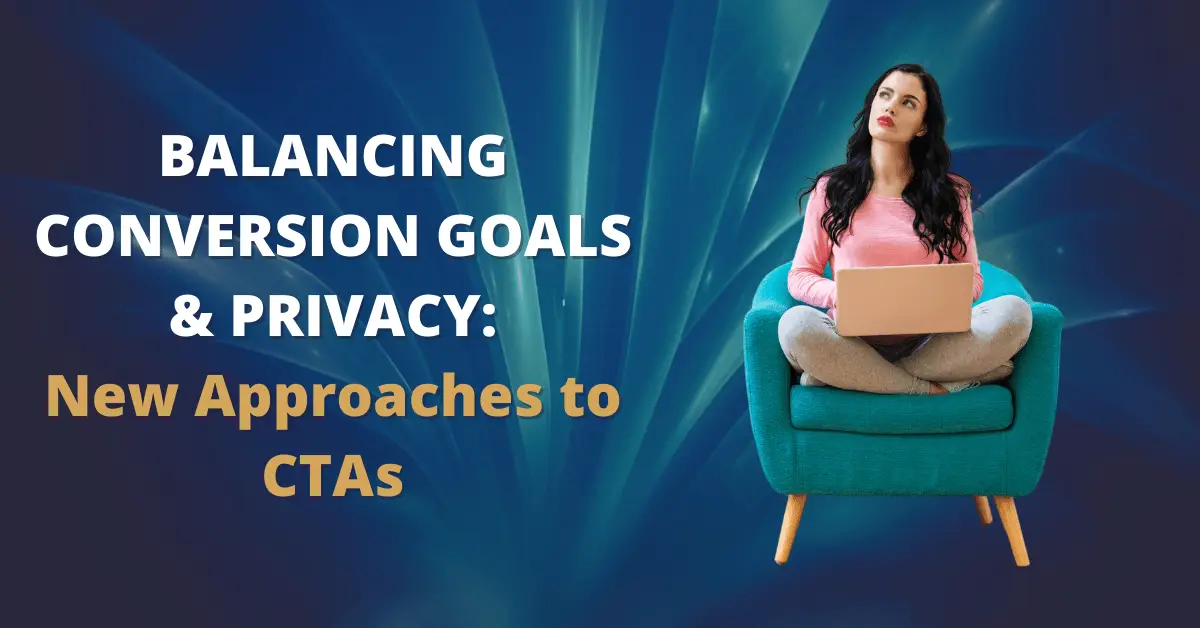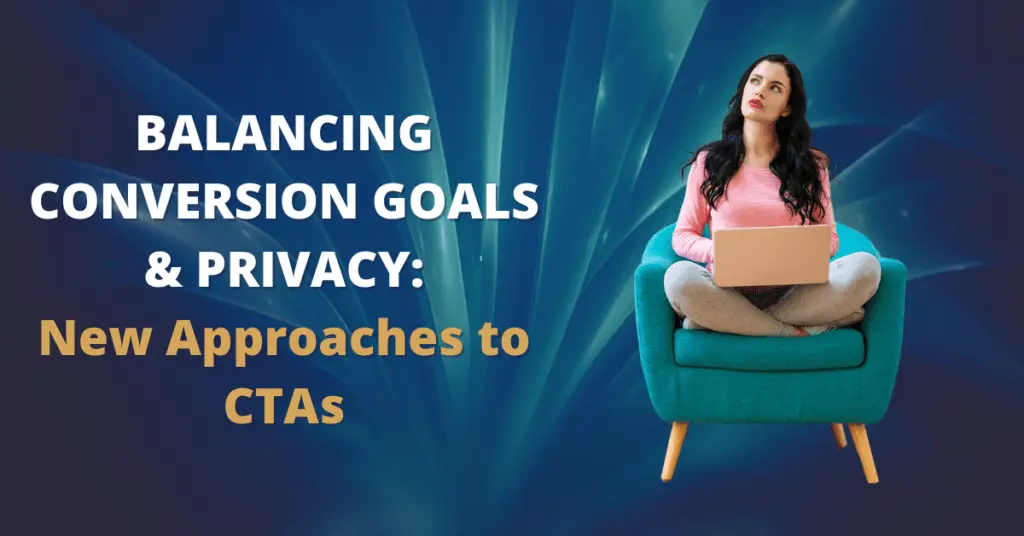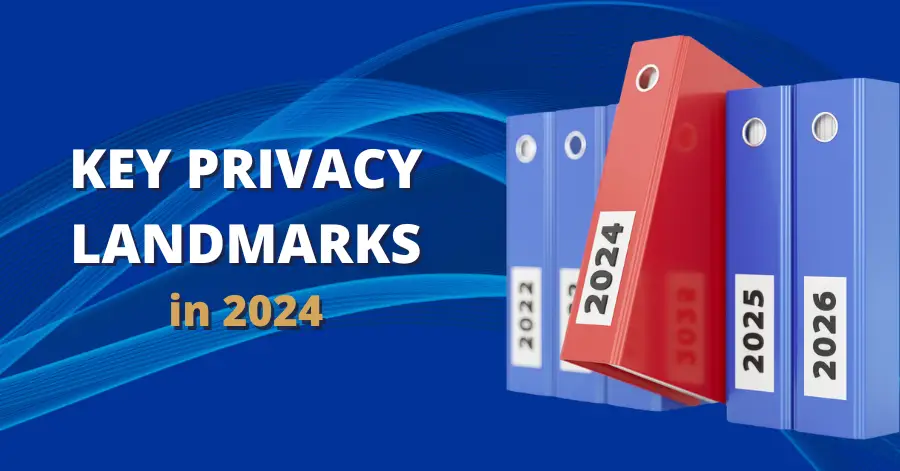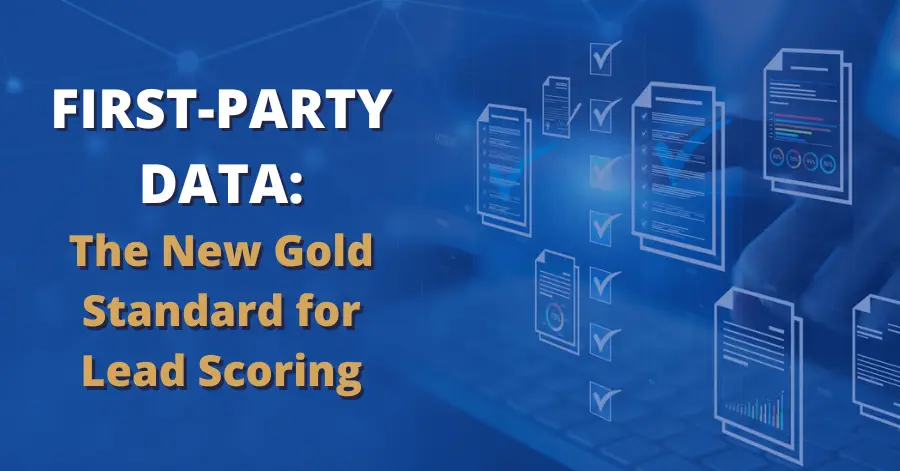Balancing Conversion Goals & Privacy: New Approaches to Calls to Action


In an increasingly privacy-conscious world, companies must continually adjust their strategies for collecting and using customer data as laws and regulations change. By necessity, this includes rethinking a major marketing staple: the Call To Action (CTA). Since customers no longer want to hand out large amounts of personal information (and you may not be allowed to ask in the first place), how can you continue using CTAs effectively when you don’t have explicit consent? One answer comes from a concept cemented in the GDPR: legitimate interest.
The legal term “legitimate interest” appears only in the EU’s privacy law, the GDPR. However, the concept is present in several other prominent regulations, each with its take on how legitimate interest is communicated and how long it lasts. A given company’s privacy policy needs to address both. More importantly, the privacy policy must stay within the appropriate legal guidelines for each regulation.
What is Legitimate Interest?
Most privacy laws contain some concept of legitimate interest even if the term itself doesn’t appear. And for our purposes, this principle is the most important. The European Commission defines legitimate interest in this way:
“Your company/organization has a legitimate interest when the processing takes place within a client relationship, when it processes personal data for direct marketing purposes, to prevent fraud or to ensure the network and information security of your IT systems.”
Old-school marketing measures would say that making a purchase or taking advantage of an offer demonstrates legitimate interest to be contacted frequently and perpetually. But a detailed understanding of most relevant legislation shows that’s not the case. Privacy laws are concerned with the customers’ interests above all else—and most customers don’t want to be contacted forever. Nor do they want a barrage of offers on items they haven’t expressed interest in for a while. Instead, they are more likely to respond when the offer is based on recent interactions.
Layering Calls to Action
In a privacy-conscious world, companies can collect many customers’ legitimate interest through “layering” their calls to action. This ensures you’re targeting customers that actually want to hear from you, rather than just sending off mass emails.
One simple way to layer CTAs is to promote them specifically to their target audience. For example, a cybersecurity management firm might publish a blog article about recognizing phishing emails. The article could contain a link to purchase the firm’s specialized antivirus software. Anyone reading the blog is interested in safeguarding their computer, and will be more likely to appreciate the offer.
A second way to layer CTAs is to embed one offer within another that has already been accepted. Let’s continue the example of the cybersecurity management firm. A customer that signs up for their newsletter demonstrates an interest in computer security, and may also be interested in attending an upcoming security webinar advertised in the newsletter. The webinar itself may conclude with a CTA to take a free cybersecurity assessment. This is just an extension of the customer’s interest, and continually accepting CTAs within CTAs demonstrates continued interest—and more importantly, continued permission to be contacted.
Regardless of how you choose to handle your calls to action, make sure to keep your promises! Failure to follow through on an offer will only hurt you.

Different Types of CTAs
Showcasing a call to action is more than just presenting a customer with a link. What form does it take? Is it likely to draw the customer in? Experiment with these tried-and-true CTA formats:
- Strategy session. If you’re promoting training or services, use this session to show the customer how your services will help them.
- Demo invitation. Invite the customer to watch your product in action. This approach is best for highly engaged leads that are very likely to buy from you.
- Free trial. Let the customer play with a product or service on their own before making a decision.
- Series of emails. Offer to send the customer a series of emails specifically focused on something they’re interested in. This gives the customer engaging material, and you a lead to nurture.
- General marketing offer. If all else fails, go for Plan B and simply ask the customer if they’re open to any and all future communications from you. You’ll retain a lead, but you’ll have to continue working to narrow down their interests.
Managing Customer Preferences
Customers deserve to know that you respect their preferences. But this raises the question: how can you keep track of everyone’s marketing preferences? Can you respond effectively when they express a preference and prove to your customers that you’re following the law?
That’s where a specialized privacy compliance software comes in. 4Comply, a creation of 4Thought Marketing, is designed to keep your marketing campaigns in line with the applicable regulations and prove to your customers that you’re doing your best. Privacy software helps with several critical functions:
- Centralized consent: This system keeps track of which customers provided explicit consent and those who didn’t, but whose actions satisfy legitimate interest.
- Permissions. Permissions tracking ensures that you use customer data in compliance both with legal requirements and with customer preferences.
- Legal activity history. A permanent legal activities archive keeps track of every consent-related activity. Any customer that asks why you’re emailing them can be shown that they responded to a call to action.
Customers are more aware than ever of their rights to privacy. Likewise, privacy laws have more teeth and can cost you more for violations. An all-in-one software solution that monitors all your activities is an invaluable addition to your arsenal.
Structure Your Offers for a Privacy-Focused Audience
Privacy laws are designed to protect customer data, not hinder businesses. You can still maintain a lucrative marketing strategy while staying well within the guidelines. However, you must think more strategically about your approach.
With new restrictions on advertising, companies have had to learn to balance zealous marketing with a healthy respect for customer privacy. Correctly understanding legal and practical guidelines for sales tactics can be time-consuming. However, with the right approach, the results are more than worth it.
Is your system optimized for new legal requirements? We can help you find out! Get in touch today for a privacy assessment to keep your marketing strategy in the clear.





